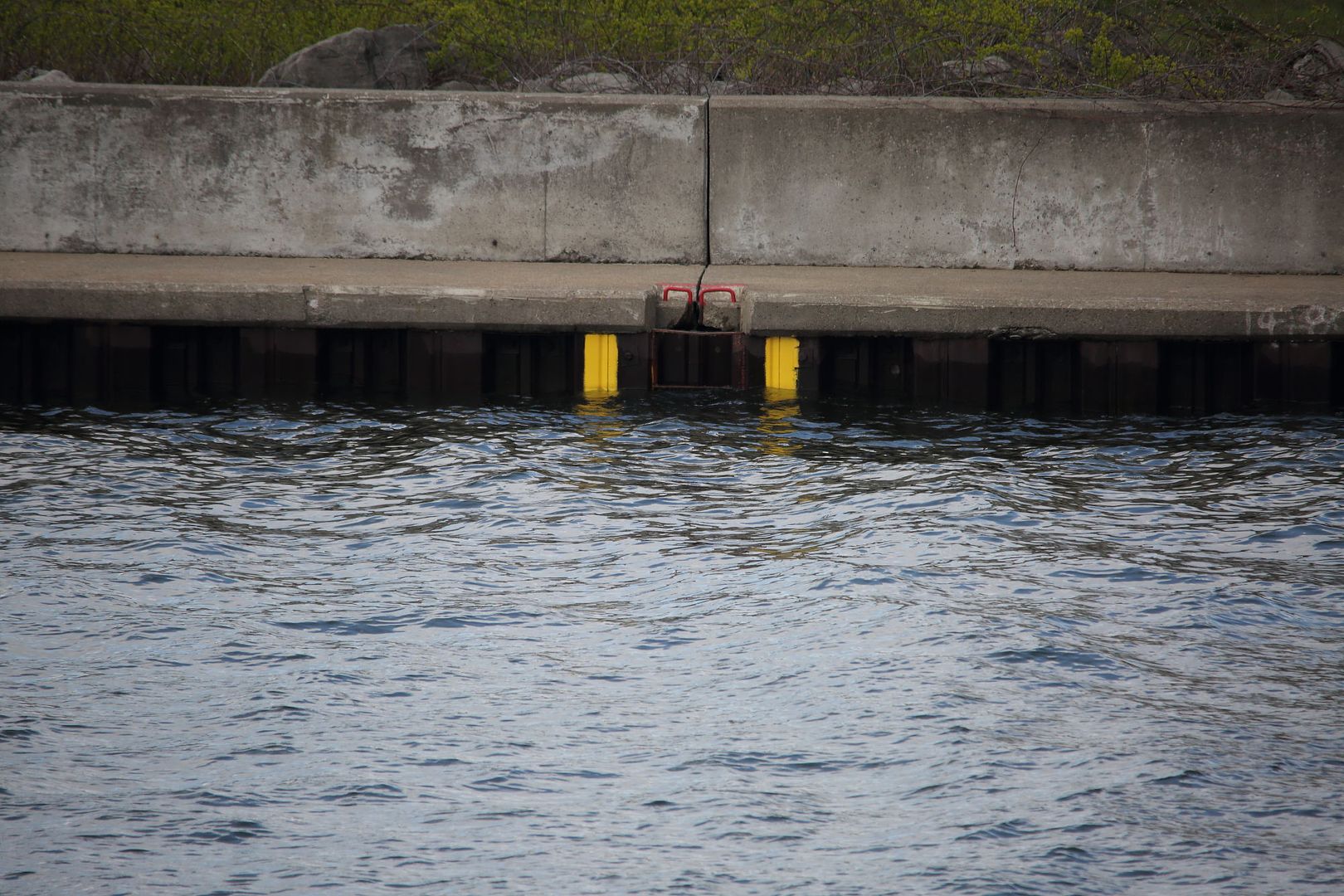Good morning
Thought I would start with some news from around the lake,
since many are running the below story in various forms this week, I found this one to cover most of the topic. As I watched the short video in the beginning and read the article, it was refreshing to see as it is seldom pointed out. It shows that only so much water can be released from the Mosses Saunders dam or Montreal and all the other areas built on an established flood plain will flood. What is not comforting about the current situation is the lake level is currently higher this year than compared to the same reporting period back in 2017, The amount of water being released this year is higher than it was back in 2017. Also mentioned is, Montreal and the surrounding area has already seen an inordinate amount of precipitation which does not make for a good case of releasing more water from the Mosses Saunders dam once spring comes later-similar to 2017.
https://www.democratandchronicle.com/story/news/2019/02/19/flooding-rochester-ny-lake-ontario-water-level-high/2905594002/
Friday February 22nd, the average level is at 75.00 M
Per Fisheries and Oceans Canada, Since 2008, the February lake level average has been 74.68 M
The average lake level for February in 2017 was 74.82 M
Surface water temperature by the lift bridge is 36.6 F
Next reading date is: Friday March 8th, 2019
Reading date / Lake Average 2019
Feb 08 – 74.96
Jan 25 – 74.88
Jan 11 – 74.81
++++++++++++++++++++++++++++++++++++++++++++++
Reading date / Lake Average 2018
Dec 28 – 74.78
Dec 14 – 74.72
Nov 30 – 74.696
Nov 16 – 74.68
Nov 02 – 74.67
Oct 19 – 74.614
Oct 05 – 74.72
Sept 21 – 74.785
Sept 07 – 74.86
Aug 24 – 74.91
Aug 10 – 74.98
Jul 30 – 75.12
Jul 13 – 75.129
Jun 29 – 75.228
Jun 15 – 75.25
Jun 01 – 75.33
May 18 – 75.35
May 04 – 75.23
Apr 20 – 75.08
Apr 06 – 74.97
Mar 23 – 74.918
Mar 09 – 74.99
Feb 23 – 74.973
Feb 09 – 74.90
Jan 26 – 74.95
Jan 12 – 74.81 M
++++++++++++++++++++++++++++++++++++++++++++++++
Reading date / Lake Average 2017
Dec 27 – 74.71 M
Dec 08 – 74.795
Nov 24 – 74.89
Nov 09 – 74.929
Oct 27 – 74.83
Oct 10 – 74.95
Sept 29 – 74.99
Sept 15 – 75.12
Sept 01 – 75.28
Aug 18 - 75.47
Aug 04 - 75.6
July 22 - 75.71
Updated forecast for 2019 & Experimental 5 year forecast from the Army Corps of Engineers.


Thought I would start with some news from around the lake,
since many are running the below story in various forms this week, I found this one to cover most of the topic. As I watched the short video in the beginning and read the article, it was refreshing to see as it is seldom pointed out. It shows that only so much water can be released from the Mosses Saunders dam or Montreal and all the other areas built on an established flood plain will flood. What is not comforting about the current situation is the lake level is currently higher this year than compared to the same reporting period back in 2017, The amount of water being released this year is higher than it was back in 2017. Also mentioned is, Montreal and the surrounding area has already seen an inordinate amount of precipitation which does not make for a good case of releasing more water from the Mosses Saunders dam once spring comes later-similar to 2017.
https://www.democratandchronicle.com/story/news/2019/02/19/flooding-rochester-ny-lake-ontario-water-level-high/2905594002/
Friday February 22nd, the average level is at 75.00 M
Per Fisheries and Oceans Canada, Since 2008, the February lake level average has been 74.68 M
The average lake level for February in 2017 was 74.82 M
Surface water temperature by the lift bridge is 36.6 F
Next reading date is: Friday March 8th, 2019
Reading date / Lake Average 2019
Feb 08 – 74.96
Jan 25 – 74.88
Jan 11 – 74.81
++++++++++++++++++++++++++++++++++++++++++++++
Reading date / Lake Average 2018
Dec 28 – 74.78
Dec 14 – 74.72
Nov 30 – 74.696
Nov 16 – 74.68
Nov 02 – 74.67
Oct 19 – 74.614
Oct 05 – 74.72
Sept 21 – 74.785
Sept 07 – 74.86
Aug 24 – 74.91
Aug 10 – 74.98
Jul 30 – 75.12
Jul 13 – 75.129
Jun 29 – 75.228
Jun 15 – 75.25
Jun 01 – 75.33
May 18 – 75.35
May 04 – 75.23
Apr 20 – 75.08
Apr 06 – 74.97
Mar 23 – 74.918
Mar 09 – 74.99
Feb 23 – 74.973
Feb 09 – 74.90
Jan 26 – 74.95
Jan 12 – 74.81 M
++++++++++++++++++++++++++++++++++++++++++++++++
Reading date / Lake Average 2017
Dec 27 – 74.71 M
Dec 08 – 74.795
Nov 24 – 74.89
Nov 09 – 74.929
Oct 27 – 74.83
Oct 10 – 74.95
Sept 29 – 74.99
Sept 15 – 75.12
Sept 01 – 75.28
Aug 18 - 75.47
Aug 04 - 75.6
July 22 - 75.71
Updated forecast for 2019 & Experimental 5 year forecast from the Army Corps of Engineers.


Likes:
scotto



